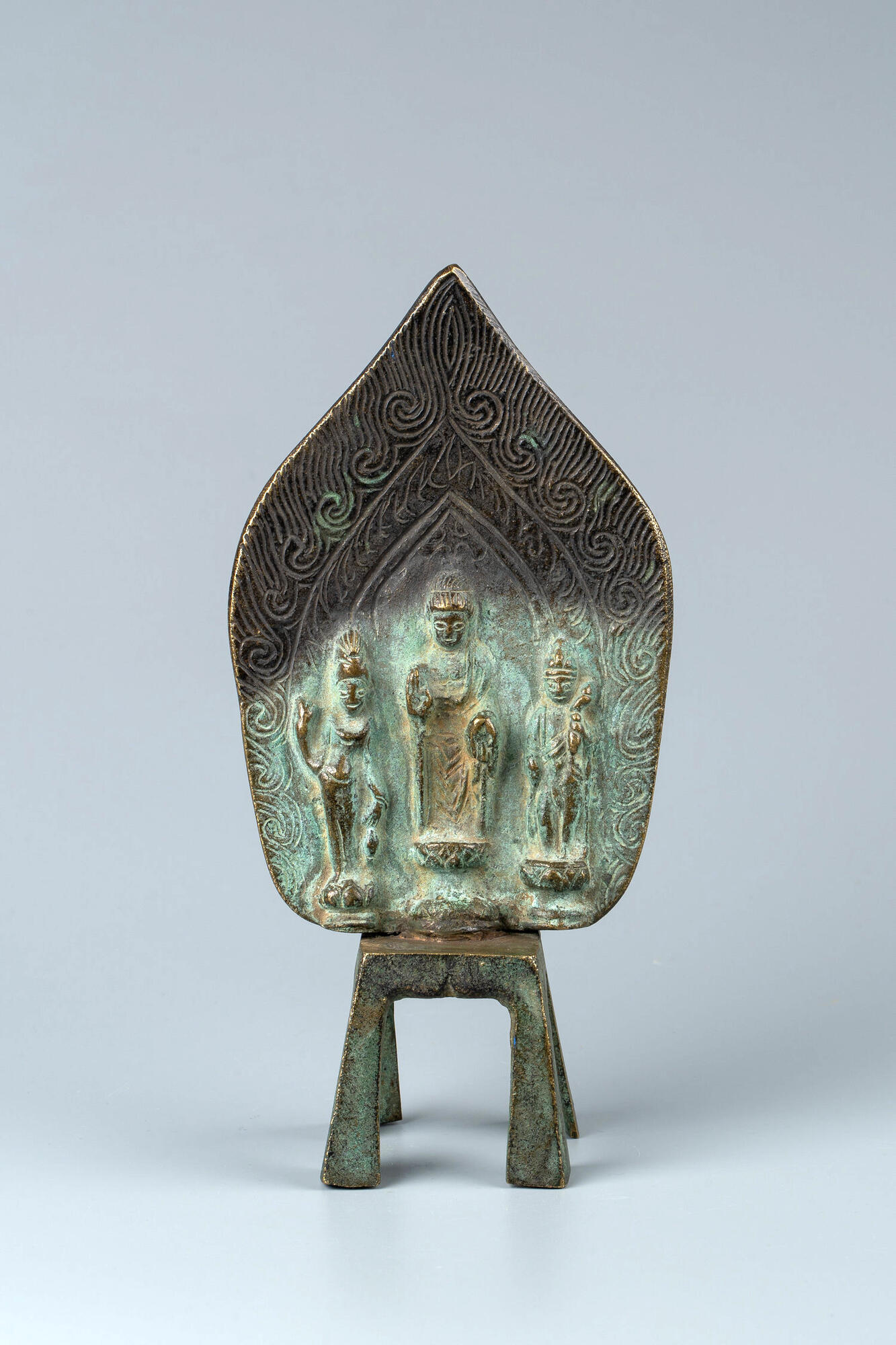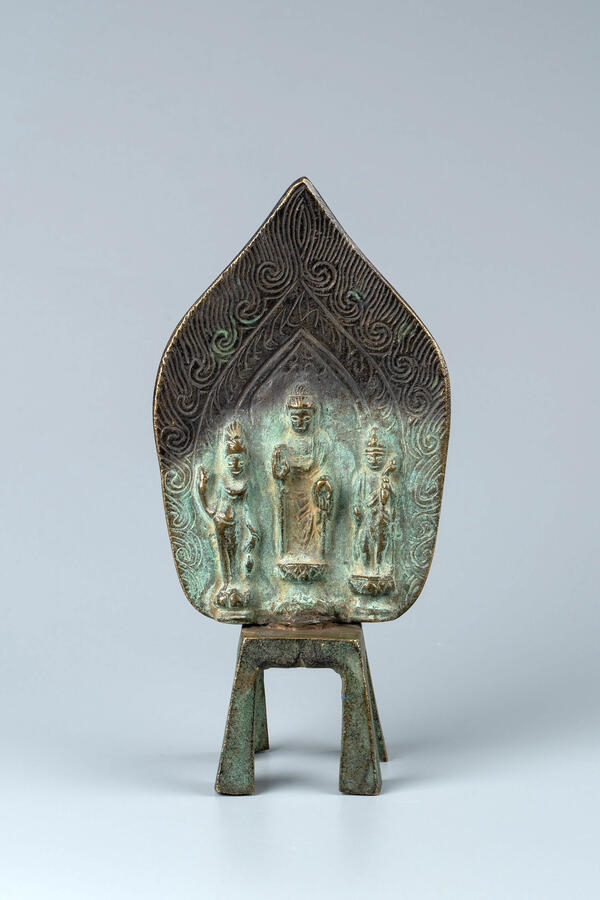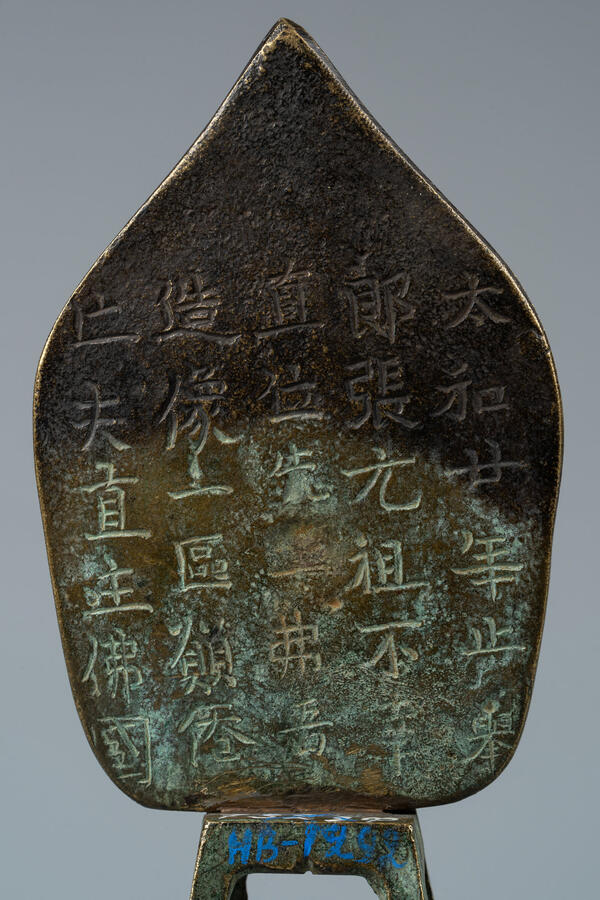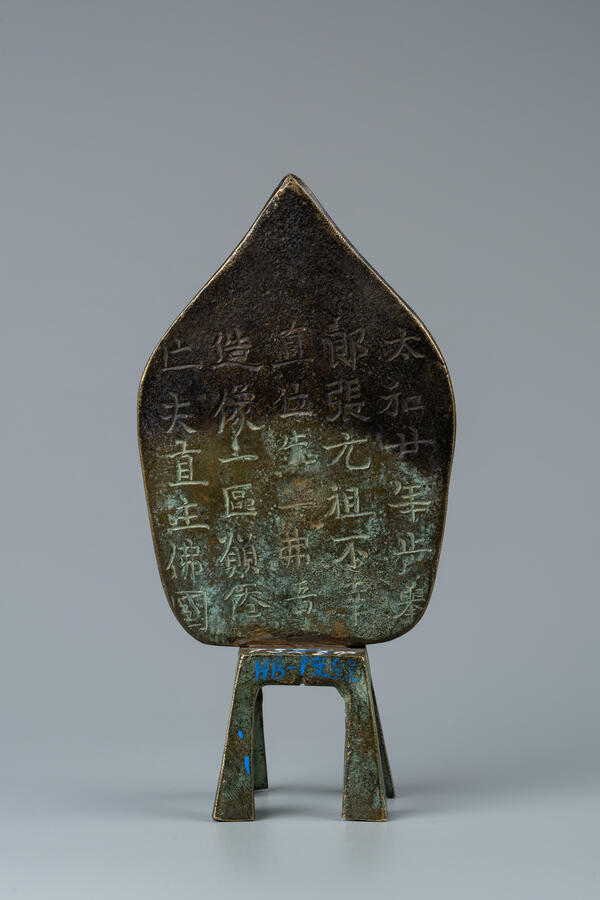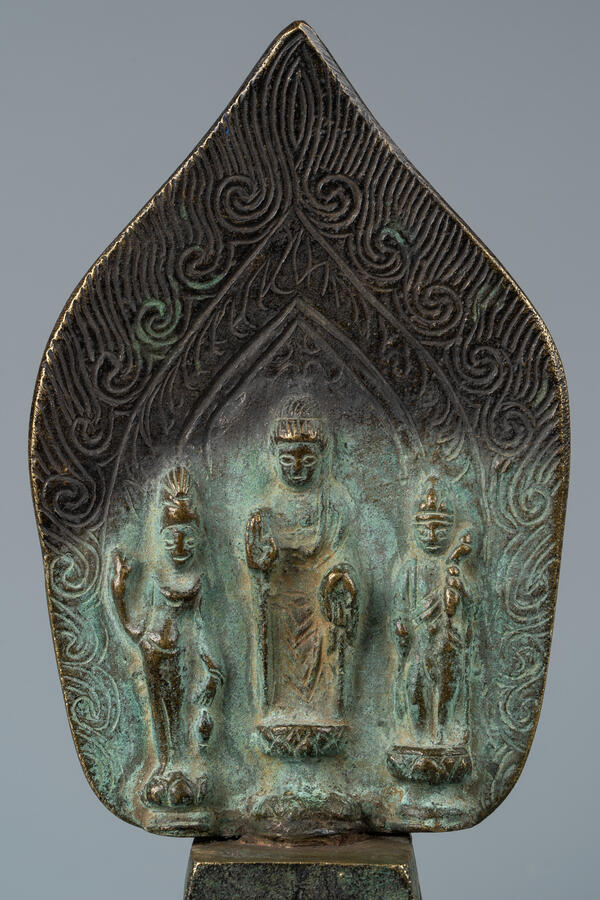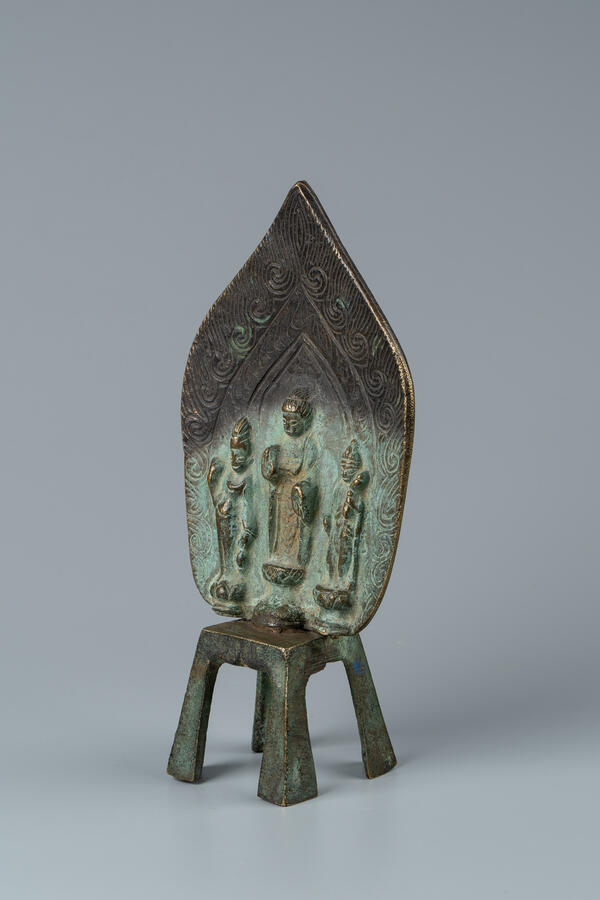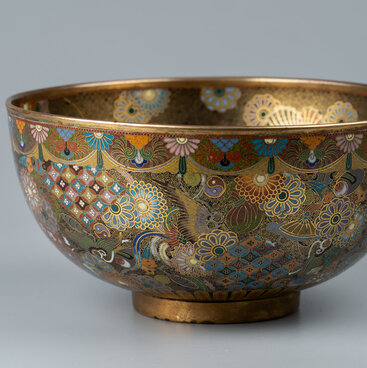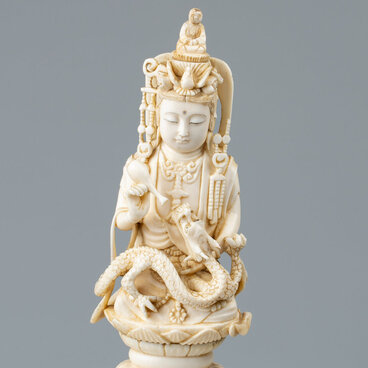The Samara Regional Art Museum houses a stunning example of early Buddhist art from China — a small bronze composition depicting Buddha Shakyamuni with two bodhisattvas. A bodhisattva in Buddhism is a being who has decided to become a Buddha, that is, to “awaken” for the benefit of all living beings.
Historians know that, although Buddhism was introduced into China at the turn of the common era, the Buddhist teachings began to spread throughout the country only from the 4th century. A large number of bronze Buddhist sacred objects, which were found by archaeologists, prove that Buddhism was already popular during the reign of the Northern Wei Dynasty (386 — 535), when not only the emperors and aristocrats, but also many representatives of the middle and lower strata of the population became Buddhists.
One of the most valuable exhibits from the Samara Museum is the Buddhist shrine “Buddha with disciples”, an outstanding example of bronze sculpture of the middle of the first millennium AD. The altar was presented to the temple by Xian Fu, widow of a deceased official. There is an inscription on the back of the sculpture: a prayer that her husband Zhan Yuan Zu would immediately settle in the land of Buddha.
Three figures are surrounded by a halo. In religious art, a halo denotes a zone of light located around the head or body of a god or saint. Similar halos can be seen on the images of ancient Indian and Chinese gods. The halo around the Buddha’s figure with the disciples can also symbolizes the “aura” — the radiance around the head and the whole body, a sign of a special mystical power and a manifestation of the soul and spirit of a person.
Since the ancient times, Buddhist artworks embodied the eternal truths and foundations of the faith. To this day, a special place in Buddhist art is given to the reflection of a person’s individual desire for perfection and the ultimate goal — to go beyond the real world and attain nirvana. Buddha’s own life serves as the main guideline: Buddhism places a person at the center of Being, but only an outstanding person. That is why Buddhist art, in fact, never depicts anything other than the human image of Buddha with all the signs of his detachment from the world.
Historians know that, although Buddhism was introduced into China at the turn of the common era, the Buddhist teachings began to spread throughout the country only from the 4th century. A large number of bronze Buddhist sacred objects, which were found by archaeologists, prove that Buddhism was already popular during the reign of the Northern Wei Dynasty (386 — 535), when not only the emperors and aristocrats, but also many representatives of the middle and lower strata of the population became Buddhists.
One of the most valuable exhibits from the Samara Museum is the Buddhist shrine “Buddha with disciples”, an outstanding example of bronze sculpture of the middle of the first millennium AD. The altar was presented to the temple by Xian Fu, widow of a deceased official. There is an inscription on the back of the sculpture: a prayer that her husband Zhan Yuan Zu would immediately settle in the land of Buddha.
Three figures are surrounded by a halo. In religious art, a halo denotes a zone of light located around the head or body of a god or saint. Similar halos can be seen on the images of ancient Indian and Chinese gods. The halo around the Buddha’s figure with the disciples can also symbolizes the “aura” — the radiance around the head and the whole body, a sign of a special mystical power and a manifestation of the soul and spirit of a person.
Since the ancient times, Buddhist artworks embodied the eternal truths and foundations of the faith. To this day, a special place in Buddhist art is given to the reflection of a person’s individual desire for perfection and the ultimate goal — to go beyond the real world and attain nirvana. Buddha’s own life serves as the main guideline: Buddhism places a person at the center of Being, but only an outstanding person. That is why Buddhist art, in fact, never depicts anything other than the human image of Buddha with all the signs of his detachment from the world.
